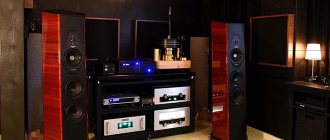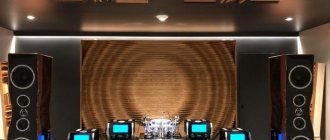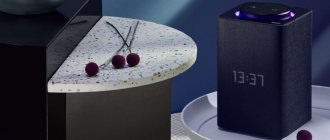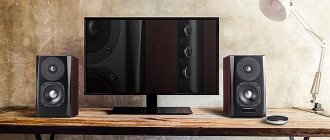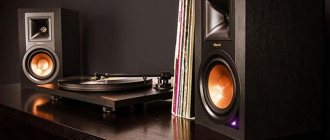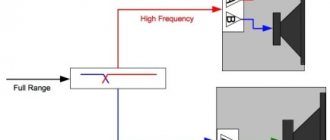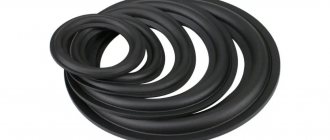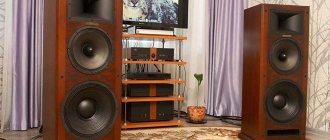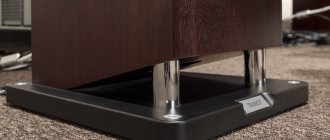“Big-scale sound and all the nuances of its detail from floor-standing speakers in a beautiful finish”
When we first got acquainted with the Piega Classic 5.0 speakers, we noticed two obvious features: the full scale of the sound picture and the purity and transparency of each note.
The Piega brand is not very well known in the UK - and for good reason. This Swiss brand has been developing its own speakers with ribbon drivers since 1986, and these speakers are a must-see: the sound is truly detailed and articulate.
Sound quality
A huge, well-developed sound stage amazingly reveals all the nuances of the recording.
The strokes and small details are subtle, but clear and transparent. In Massive Attack's Angel, you can clearly feel the texture of the tense bassline, its definitely dark and dirty tone, and in Teardrop, the rustling top is conveyed with excellent volume and confidence. Very smooth and confident presentation of music.
The bass, taking into account the realities of the dimensions of the Piega 5.0 case, does not go to unprecedented depth, but will always be appetizing and savory: the “meat” is in place. Long exposure to these speakers helps to determine their main feature: organization and evenness.
The Dead Weather's 60 Feet Tall is completely under the control of our playback path, and each instrument, despite all the aggression, remains cohesive and part of a single whole.
The reason for this unshakable confidence is most likely due to the fast and clear properties of the ribbon tweeter. He executes the beginning and end of each note amazingly and is strong in nuance.
There is, of course, a downside to the ribbon tweeter - a slightly lightweight and prominent character that can sometimes manifest itself, for example, with Stevie Nicks' nasal vocals or the harsh guitars in most Marilyn Manson songs.
This is not to say that the top end of these speakers is harsh or too bright - not at all. It’s just that sometimes certain features of the sound are emphasized.
When choosing a system, remember these features of the sound signature of the speakers, and everything will turn out great. Piega Classic 5.0 requires a solid and confident amplifier - for example, the Roksan Caspian M2 - which also perfectly follows the biting rhythm and emphasizes the richness of timbres.
The only aspect of the sound in which the Piega Classic 5.0 is not quite up to par is dynamics. Yes, they have scope, they sound loud and “rock” the room, but it happens that in some song something is missing, as if the intentions of the music creators are not fully manifested.
Here's an example: the drummer's job in Angel. The drums are clear, but I would like to add dirt to them, as if the impact was more noticeable to the body. And in the mesmerizing Light of the Seven from the sixth season soundtrack, Game of Thrones fails to quite capture that superb build-up of suspense.
It turns out that in this composition the long, rising introduction is more delicate than threatening, and the piano notes are slightly lacking in tenderness and dreaminess.
Here our tract begins to show excessive arbitrariness, the mysterious flickering of pauses is somewhat masked.
This effect also happens on vocals. Christine Mc Vie's voice is clearly highlighted in Songbird, but we would have liked a little more dynamic expression in it.
In this price range there are competing models such as the Tannoy Revolution XT 6F. Their sound is richer and more dynamic, although they do not sound as transparent as Piega 5.0.
As an unusual alternative, we can mention the tiny Neat Iota Alpha speakers, which also sound more expressive, although also much less transparent than our Piega.
Please understand our comments correctly: the Piega Classic 5.0 has everything in order with sound. Lively and precise nuances captivate and attract. However, it happens that from Piega 5.0 you want more tangible expression, dynamic excitement and bursts.
Founded over 30 years ago in Horegen on Lake Zurich, Piega designs and manufactures loudspeakers with superior quality and the timeless elegance that comes from Swiss excellence.
Most of the high-tech loudspeaker components are ordered externally by the company, but all stages of development, assembly and testing of the famous ribbon drivers, as well as the speaker systems themselves, are carried out by the company's employees in-house. All PIEGA loudspeaker systems, regardless of series, are still assembled by hand without the use of a conveyor belt. And since the work is done by real professionals, the quality of the speakers is exceptional.
The history of PIEGA began in the 80s of the last century, when a young engineer Kurt Scheuch decided to experiment with a Decca ribbon driver and unexpectedly discovered that he could significantly improve its design. Shaikh made the first samples of his own “ribbon tweeters” at home: Kurt’s friends and acquaintances liked the sound of the new tweeters, some even wanted to get the same ones for themselves. Among those interested was Kurt’s future partner in the company, Leo Greiner, an engineer by training; he quickly realized the promise of Shaikh’s emitter and invited him to coordinate efforts. This is how Shaikh and Greiner founded a company under the name PIEGA in 1986.
Like any other successful company, PIEGA's history had milestones that determined its future development path. By the time the company was founded, Shaikh and Greiner already had a unique ribbon tweeter, which the creators called LDR (Linear Drive Ribbon), and at the same time, in 1986, the first speaker appeared, released under the PIEGA brand. However, breaking into the high-end speaker market was not so easy; competition there was and remains very high. The only advantage in the form of a very detailed and linear tweeter in the working area was not enough, besides, PIEGA had serious competitors: the same Apogee and Magnepan, which began to develop ribbon driver technologies long before the creation of LDR.
Shaikh and Greiner had to imagine and come up with something new: so in 1991 they developed their first speaker, in which tape heads sounded two frequency bands at once. In 1993, an important step was taken towards the future popularity of the company - original speakers were created in narrow cases made of MDF and metal with a triangular back panel. PIEGA designers hit the top ten, being among the first to realize consumers' dreams of not only good-sounding, but also stylish-looking speaker systems that would look appropriate in any modern interior. Today these fashionable speakers, designed in the Life-Style style, are in the lineup of almost every more or less well-known manufacturer. And in the early 90s, few foresaw the onset of a revolution in speaker design, so the Swiss, being in the forefront, gained a second important advantage over their competitors.
Then, in 1997, PIEGA further improved the technology for manufacturing metal cabinets: now they were made of aluminum by pressing under pressure and high temperature, and at the last stage they were anodized, resulting in beautiful “free” shaped cabinets that are extremely strong and durable, these will last The owner is more than a dozen years old. By the way, today there are other methods of producing cases in the arsenal: for example, sand casting. Recently (in 2006), PIEGA tested another cabinet manufacturing technology: the “aluminum sandwich”. There is also commendable diversity in the outline of the Swiss cabinets: there are speakers with a trapezoidal cross-section, semi-elliptical or with a C-shaped bend of the rear panel. Wood is now almost never used in cabinets; only in “older” models the inside of the front panel of the loudspeaker is made of plywood.
The metal housings of PIEGA speakers have always been manufactured according to the patterns of the company's specialists from one large European manufacturer of aluminum panels involved in the automotive and aircraft manufacturing industries. It was from the “motorists” that the Swiss discovered a way to combat the “cabinet” coloration of the sound of their speakers. To dampen the internal volume of housings, bitumen-like material Idikell is used, varieties of which have long proven themselves to be the best in soundproofing cars of various German manufacturers, including Audi and Mercedes.
The third, but most significant achievement of PIEGA is the development of the world's first coaxial module, composed of two ribbon heads for a tweeter and a midrange driver. The diaphragms of both emitters are made on the same flat membrane made of Kapton film, which serves as a frame for a conductive layer of aluminum foil with a thickness of only 0.007 mm. Located in the center, the tweeter diaphragm is separated from the rest of the membrane by etched vertical cutouts and strips of sound-absorbing material. In turn, the midrange head diaphragm is divided into several strips by vertical cutouts. The midrange diaphragm is “controlled” in two cycles using front and rear magnets; the tweeter has only a rear set of magnets, since interference in front of the diaphragm can damage the sound. The high sensitivity of the MF/HF emitter, approaching 100 dB, is achieved not only through the use of the thinnest and almost weightless membrane, but also through the use of very powerful neodymium magnets, which are produced specifically for PIEGA by a Swiss company.
PIEGA also orders membrane blanks for coaxial ribbon emitters externally (previously from Philips). But they do not go into use right away, undergoing proprietary processing, as a result of which a peculiar “waffle” pattern appears on their surface. Surprisingly, due to this, the resonant frequencies of the membrane shift to the region of distant ultrasound. The coinciding centers of the tweeter diaphragms and the midrange driver automatically provide smooth phase characteristics of the speakers' sound in the crossover band section at a frequency of 3.5 kHz. In total, the PIEGA mid/high frequency module covers the range from 400 Hz to 50 kHz; such a wide operating band makes it much easier to match the “ribbon” with conventional electromagnetic mid-woofer heads. Today there are two variations of PIEGA coaxial ribbon emitters: the flagship C1 in 2002 was supplemented by the now more common, smaller “copy” C2. Other Swiss speakers still use “classic” ribbon tweeters, but not the original ones, but their improved versions LDR 2642 MK2.
PIEGA today
But let's return from the glorious past of the PIEGA company to the current state of affairs: today the company is thriving, its model range consists of 7 speaker lines, including a series of several active subwoofers. The wide range of Swiss products includes various accessories for speakers, for example, aluminum stands and brackets for bookshelf and hanging models. In addition, the company produces Opus speaker cables. It is the “Opus” that are used for internal wiring in top-end PIEGA loudspeakers; these cables are specially designed for best compatibility with the electrodynamic parameters of ribbon drivers.
“We always do our best to make the music sound exactly as the composer originally intended.”
In Switzerland, the company is the market leader in loudspeaker systems and exports its products to more than 40 countries.
The company has received numerous awards over the past three years.
China - Super AV Award 2022 - MLS 2 - best floor-standing speakers
USA - GOLDEN EAR AWARD 2022 - COAX 711
Germany – Audio – Golden Ear 2022 – COAX 311 – first place in the “compact speakers” category
Japan - Stereo Grand Prix 2022 - Coax 711
China - SUPER AV AWARD 2014 - CLASSIC 40.2 and many others. piega.ch
Features and Compatibility
The Piega Classic 5.0 speakers can be classified as floor-standing speakers of medium size. They do not look massive, but at the same time they successfully fill the entire room with full, weighty sound.
The production culture is the highest, the speakers look elegant and expensive.
The piano varnish with a deep shine is good - the surface is like a mirror, and we have not seen such depth in any competitor in this price group.
Classic 5.0 is sold in black lacquer finish (like the example we tested), in white lacquer or in luxurious Macassar veneer - the veneer option is more expensive than the varnished one. We saw this veneer on the Piega Classic 3.0 shelves and let us tell you, this beauty is worth paying extra for.
Piega Classic 5.0 have a so-called 2.5-way speaker configuration: a Piega AMT-1 ribbon tweeter and two 13-centimeter speakers - one for mids and bass, the second for bass only.
The speakers are equipped with a stable base plate. It rests on spikes, they need to be screwed in before you start placing the speakers in the room.
It is necessary to devote time and attention to the correct arrangement.
If you do not screw in the spikes securely or do not set the horizontal position, the quality of bass reproduction and the accuracy of the stereo panorama will suffer.
We do not recommend placing the Classic 5.0 close to the wall, as this will compress the luxurious surround stage and the “air” around the instruments.
Optimal high-end sound is achieved with the usual parallel arrangement - there is no need to turn the speakers towards the listener.
Well, don’t forget to have enough free space around.
Passion and calculation
Listening
The character of the Piega TC 30 X becomes clear from the very first minutes of listening - a lot of precise transparent sound, coldish, but very fast and detailed. The speakers play balanced and evenly, the mids and highs do not hurt the ear at all, there is no emphasized or pumped up bass. The lower notes are reproduced very collectedly, rather even harshly, and fit well into the rest of the frequency range. When you start listening to energetic soundtracks, rock and metal, you immediately become imbued with expression and adrenaline rush and try to tap your foot to the beat. In the track “Hells Bells” by AC/DC, we are impressed by the surprisingly precise bell strikes in the intro, the distinct cymbals of the drummer, and the notorious degree of skin tension can be almost tactilely felt on the kicks. The guitars are not meaty, but extremely good in texture, the voice attracts attention and does not allow distractions. Further listening confirms the high analytical abilities of the Piega TC 30 X - the individual playing style of guitarists and drummers is freely extracted from the general sound canvas, presented absolutely clearly and in all details. During “Carry On” by Manowar, you want to get out of your chair and jump to the beat - the delivery is so catchy. Rammstein's "Mutter" disc sounds perfectly hard and coldly tenacious, but without unpleasant straining aggression, with a tightly wound pulsating rhythm. In general, when listening to any rock or metal material, the acoustics show such drive and such good performance that you quickly begin to feel like you are at a live concert with a very upbeat atmosphere and you want to exclaim: “yes, this is just some kind of holiday”! In vocal numbers with a calmer mood, you are also instantly immersed in a reflective narrative. “Little Earthquakes” from Tori Amos’s CD of the same name sounds spacious, with a slightly boomy and fuzzy sound, again evoking a concert. It is noticeable that the lows, strictly speaking, are not extremely deep, but have excellent resolution and speed. Diana Krall's defiantly audiophile recording of "Temptation" reveals all the details, allowing you to fully indulge in the study of the "texture of plucking a double bass string" and other sonic explorations. Vocal reproduction is excellent in character. The voice is generally the strong point of these speakers, especially non-academic singing, which is presented on the nerve, with a lot of individual details and roughness. The test for the subtle separation of timbres - baroque compositions performed in a historically correct (authentic) manner - the acoustics pass freely and with a bang. Close timbres are separated perfectly, the sound is very neat and flexible, light, fast, rich in subtle tints and shades. The harpsichord does not feel light or glassy—it has a wonderful, true tone. Baroque definitely succeeds with the Piega TC 30 X - due to the high detail, speed and refined manner of playing. But for symphonic works, unlike 18th-century music and historical instruments, the speakers lack a little fundamentality and a broad orchestral touch. We put on “Antar” by Rimsky-Korsakov, performed by the Gothenburg Symphony Orchestra under the baton of Neeme Järvi and hear that the woodwinds and violins are slightly brightened, the orchestra is slightly flattened in the midrange and there is no huge panorama unfolding into the distance, in depth, as is usually the case on this records. Micro-movements of tempo, short pauses and small sequences - everything is very good, precisely calibrated, but there is no distinct integral orchestral movement and breathing, a feeling of an unfolding large form. We can say that the symphonic touch is a little shallow in acoustics. Although the coaxial ribbon driver provides very smooth and uniform reproduction of the mid- and high-frequency range, a certain excess of softness in the high frequencies is sometimes detrimental, especially in the case of high academic voices. The dramatic and nervous soprano of Maria Callas, playing with millions of shades, in the famous “Habanera” looks somewhat smoothed out and unemotional, although the baroque vocal of Véronique Dietschi (“Stabat Mater” by Pergolesi) in a historical manner does not cause any complaints. Beethoven's "Appassionata" performed by Emil Gilels could do with some attack and needle-like treble. But the piano has an unusually good sense of excellent integration of frequency subranges and the absence of any timbral inconsistency between different types of drivers - classic bass heads and an exotic ribbon coaxial module. Probably, if you listen very carefully in the piano parts, the attack on the low frequencies is perceived a little sharper than on other frequencies, but this is the only thing you can find fault with - in general, the instrument sounds very smooth and absolutely not boomy. The Lübeck organ (played by Wolfgang Baumgratz in the MDG recording) plays amazingly lively. Apart from the noticeable lack of lower frequencies for an organ score, everything is not bad in terms of timbre and after-sounds. The scale and grandeur could have been greater, but the lush and detailed mids make up for a lot. In the vast majority of cases, the Piega TC 30 X demonstrates a complete understanding of different musical genres. If the playback is exciting and seamless, the speakers will also readily allow you to highlight individual parts and lines of instruments, and savor the play of overtones and aftertones. Just the perfect union of heart and mind.
conclusions
It is clear that the design of these speaker systems has been carefully thought out. Pay attention to the correct placement and selection of components and you will receive complete sound pleasure and absolute reliability in operation.
Despite our complaints about the nuances of dynamics - which is the only aspect of the Classic 5.0 sound that we can find fault with - we advise you to pay attention to these elegant-looking speakers with amazing transparency and articulation of sound.
